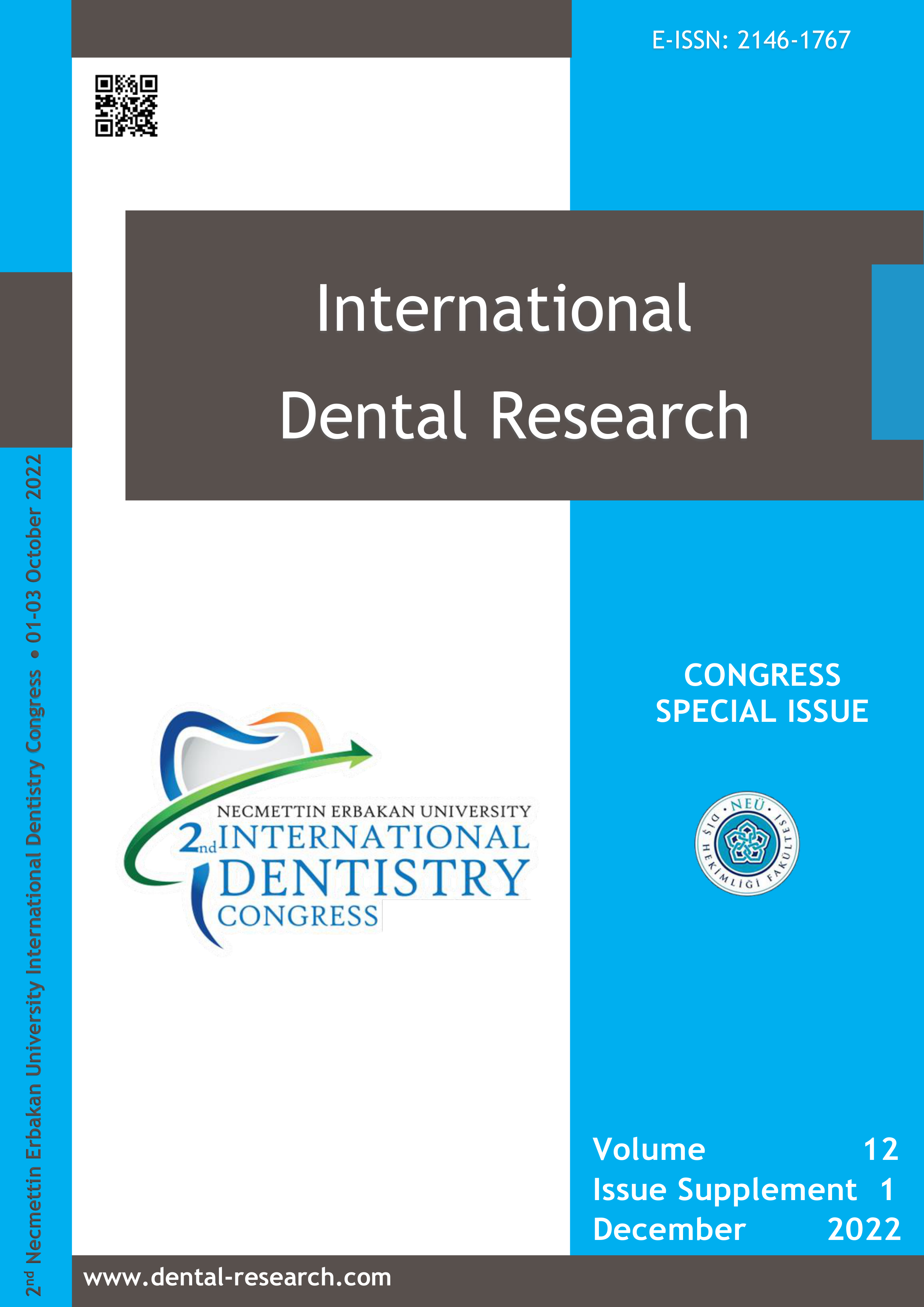Evaluation of color stability after the application of a bleaching agent to different composite resins
Abstract
Aim: In dentistry, it is desirable to preserve the properties of composites for a long time. With the development of technologies, the number of different composites used in dental treatment has increased. With contemporary patients’ aesthetic expectations, bleaching treatmens are often sought, and the literature contains many studies on the effects of bleaching on composites. Our study aimed to examine the color stability of different types of composites immersed in different solutions after bleaching treatment.
Methodology: A total of 72 samples (n = 8) of three composite materials were examined: Omnichroma (Tokuyama Dental Co., Tokyo, Japan), Estelite Posterior (Tokuyama Dental Co., Tokyo, Japan), and Quadrant (Cavex, Holland BV, Netherlands). All specimens were subjected to Total Blanc (Nova DFL, Rio de Janeiro, Brazil), which is an office-type bleaching agent. After bleaching treatments, the specimens were immersed in distilled water. The baseline measurements were then recorded. After being immersed in distilled water, tea, or coffee for seven days, the final color measurements were recorded. A VITA Easy Shade device (Vita Zahnarzt, Bad Säckingen, Germany) was used to take color measurements. The CIEDE2000 formula was used to calcuate ΔE00 values. The Kruskal–Wallis test was used to compare the ΔE00 values obtained from the composite samples to assess color stability. The results were rated at a significance level of p < 0.05.
Results: After bleaching treatments, the interaction between the different composites and the solutions in which they were immersed had a statistically significant effect on ΔE00 values (p < 0.05). The highest mean value was obtained with the quadrant composite material that was immersed in the coffee solution.
Conclusion: It is clear that tea and coffee cause discoloration in dental composites after bleaching treatments. Due to the sorption of these solutions into the composite structure, dentists should warn patients to be cautious about consuming beverages after bleaching.
How to cite this article:
Köse HD, Güner Z. Evaluation of color stability after the application of a bleaching agent to different composite resins. Int Dent Res 2022;12(Suppl.1):79-84. https://doi.org/10.5577/intdentres.453
Linguistic Revision: The English in this manuscript has been checked by at least two professional editors, both native speakers of English.
Full text article
Authors
Copyright © 2022 International Dental Research

This work is licensed under a Creative Commons Attribution-NonCommercial-NoDerivatives 4.0 International License.
This is an Open Access article distributed under the terms of the Creative Commons Attribution 4.0 International License (CC BY 4.0), which permits unrestricted use, distribution, and reproduction in any medium, provided the original work is properly cited.

